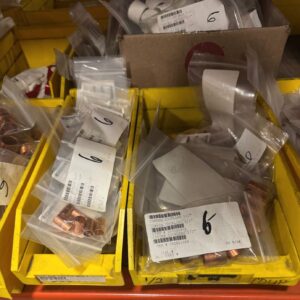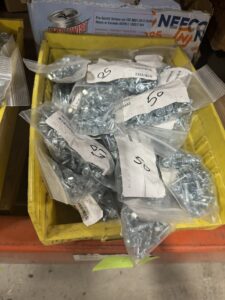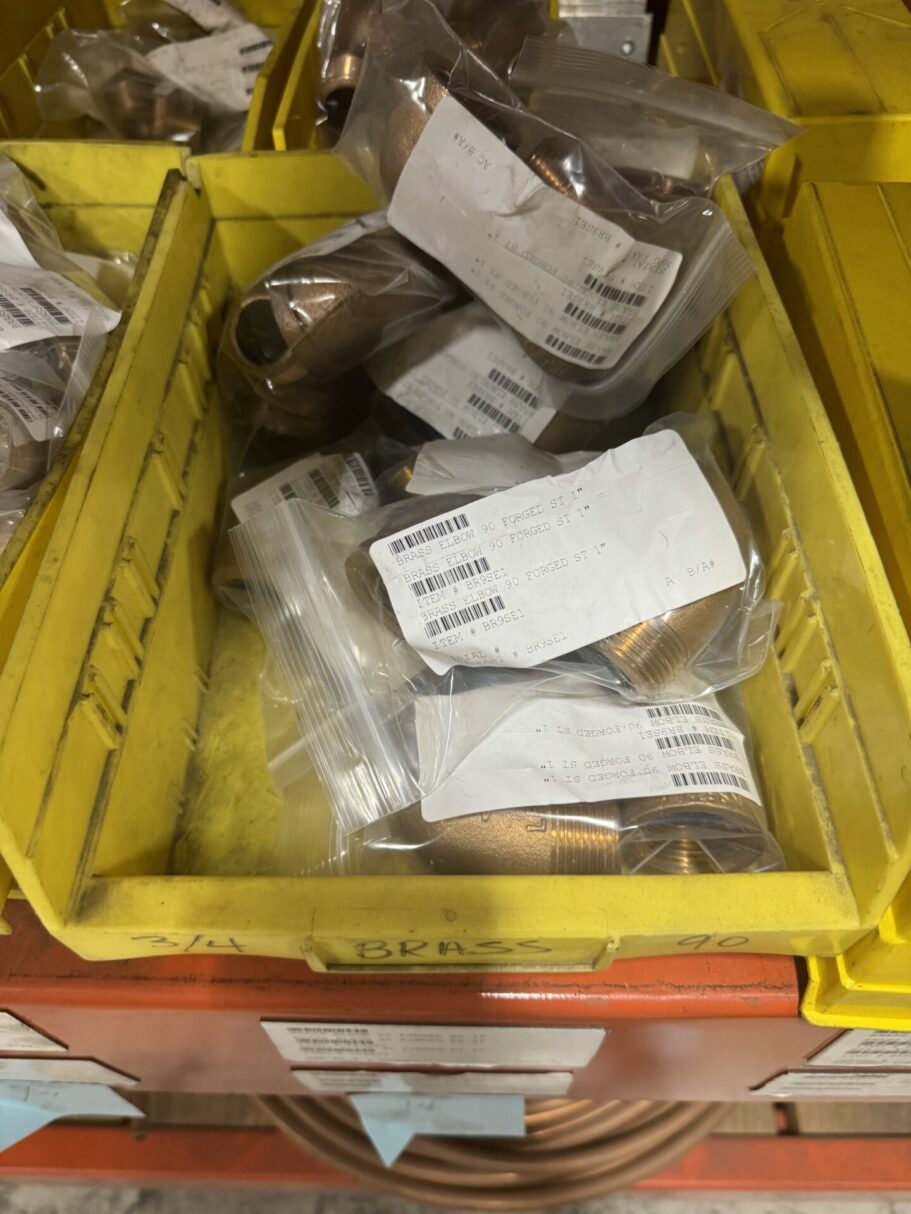While the question “Does it bring me joy?” may spur some people to better divide their belongings into “keep” or “throw” bins, this isn’t how it goes in trucks and warehouses. Having done audits in many of these, we’ve pretty much seen it all. But we never cease to find little nuggets of organizational wisdom, if you will.
One recent example was at an inventory audit in Florida, where a customer had taken the initiative to bag loose small materials into “grab bags”. They were divided into quantities, such as 2, 6, 10, 25, and 50, and each of them was barcoded using Ply. Genius, right?
Initially, we thought so too. But then the lingering question hit: would anyone actually do this? So, let’s try to answer it the old-fashioned way: a pros and cons list.
Pro: Seamless Barcoding and Tracking
“We don’t want techs to come in and just take a handful of items and leave.”
That’s one of the phrases we hear the most when auditing and implementing Ply. It’s a genuine concern. After, all if your techs take a handful of items, how do you know which ones they took? And what about how many? A handful of materials can mean huge financial losses for many businesses in the long run.
Organizing these small materials in grab bags makes for better organization. But the true pro comes from barcoding those bags and using the right technology. This provides a level of visibility that wasn’t there before, giving you insights into quantities and tracking. With Ply, techs can assign bags to jobs and warehouse managers can see where these bags are going and when more could be needed. Seems easy enough, right?
Bonus points: It also solves those pesky miscounts or any accidental mixing. This alone is enough to convert anyone to grab-bag-ism, but wait there’s more!

Pro: Clean Materials
There’s nothing that oxygen loves to do more than rust screws. Keeping your materials clean, especially if they sit around for a while, is imperative to avoid losing money and possibly jobs. Cue the grab bags!
By bagging these materials up, you’re:
- Keeping them from the elements.
- Improving overall cleanliness.
- Extending their longevity.

Con: Time-consuming
You’re probably thinking “Well, this is all great but who’s gonna actually count and bag the materials? And how can I get my nephew to do it?”
Many businesses simply don’t have the time. Reduced staff, amount of jobs, and day-to-day tasks can put a damper on even thinking of attempting these grab bags. And suppose you start: what happens if you don’t finish it?
Other businesses could probably take the “if it ain’t broke, don’t fix it” approach, especially if it involves taking techs from jobs to bag items or having to re-learn where these bags are, what items they have, and how to manage them in the future.

Final Thoughts
The good news is that this approach doesn’t have to happen all at once. Even when you’re done, it’s just about managing it, breaking up boxes into smaller bags, and applying barcodes to maintain visibility.
So how should you go about it? And which materials should you bag? It all depends on your overarching goal. One way to go about it could be by starting with higher-value items, like copper fittings, anything ProPress, brass fittings, etc. For the smaller items with larger quantities, you can always use a small counting scale or a cup that represents, approximately, whatever you’re trying to achieve.
The point is that, for a few dollars in bags and a little time and discipline, it’s worth considering. The pros outweigh the cons with this one.



